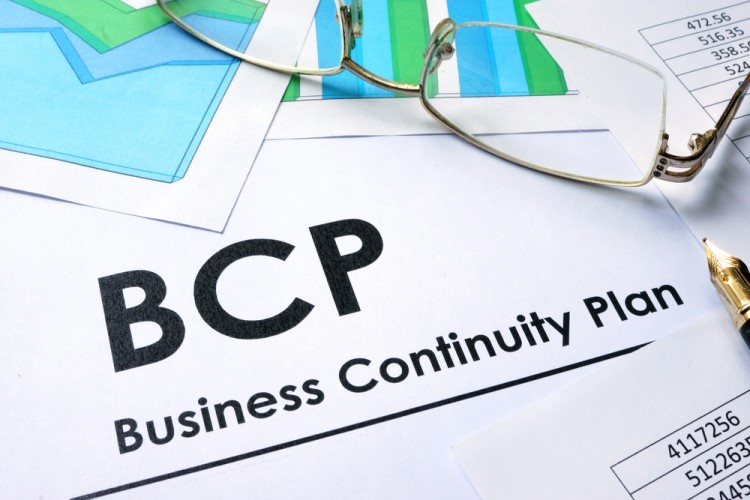Business Continuity Planning (BCP) is a strategic approach designed to ensure that a company can continue to operate during and after a significant disruption. This proactive process involves identifying critical operations and risks. Then developing plans to ensure that essential functions can continue across a variety of adverse scenarios. Moreover, BCP is crucial for minimizing downtime and mitigating potential financial loss, safeguarding both reputation and revenue streams.
Furthermore, effective BCP prepares organizations to respond swiftly and effectively to incidents such as natural disasters, cyber-attacks, or technological failures. It includes recovery strategies that align operational needs with the capabilities to restore services swiftly and efficiently. Ultimately, BCP is not just about recovery; it’s about maintaining service, quality, and availability during crises, ensuring that an organization remains robust and resilient no matter the challenge.
Key Components of a Business Continuity Plan
A comprehensive Business Continuity Plan (BCP) incorporates several key components that ensure an organization’s operational resilience. Firstly, risk assessment forms the foundation of effective BCP by identifying potential threats to business operations. This analysis allows organizations to prioritize risks based on their impact and likelihood, guiding the allocation of resources more effectively.
Secondly, a business impact analysis (BIA) is crucial. This process determines the effects of disrupting critical business functions and processes. The BIA helps to identify which areas require the fastest recovery to maintain business continuity and minimize impact. Additionally, it sets the recovery time objectives and recovery point objectives, which are critical metrics for designing recovery strategies.
Furthermore, recovery strategies tailor to the specific needs identified in the BIA. These strategies may include alternative business practices, such as relocating to a secondary site, utilizing cloud computing for critical data and applications, or setting up mutual aid agreements with other businesses. Each strategy aims to restore business operations within the time frame stipulated by the recovery objectives.
Overall, these elements—risk assessment, business impact analysis, and recovery strategies—form the backbone of effective Business Continuity Planning, ensuring that organizations can withstand and recover from disruptions while maintaining critical operations.
Steps to Develop and Implement a Business Continuity Plan
Developing and implementing an effective Business Continuity Plan (BCP) requires a structured approach, ensuring comprehensive coverage of all potential disruptions. The first step is to establish a business continuity team comprising members from various departments who understand the critical functions of the organization. This team is responsible for overseeing the BCP development and implementation process.
Next, conduct a thorough risk assessment and business impact analysis to identify vital components that support essential services and processes. This phase helps prioritize the recovery efforts based on the severity of impact and likelihood of different threats. Following this analysis, design recovery strategies that address the identified risks and ensure quick restoration of operations. These strategies should include detailed action plans for various scenarios, including data backups, alternative work sites, and resource reallocations.
Furthermore, testing and training are crucial to BCP effectiveness. Regular drills and simulations should be conducted to test the practicality and efficiency of the continuity plans. Training programs must be established to educate all employees on their roles during a disruption, enhancing the organization’s overall resilience.
Finally, it is essential to regularly review and update the BCP to adapt to new threats, technological advancements, or changes in business operations. This ongoing maintenance ensures that the plan remains relevant and effective, securing the organization against future uncertainties. Emphasizing these steps in Business Continuity Planning helps create a robust framework that supports sustained operational integrity.
Technology’s Role in Business Continuity
Technology plays a pivotal role in enhancing Business Continuity Planning by providing robust solutions that ensure operational resilience. Cloud computing, for example, is instrumental in facilitating remote access to critical data and applications, enabling businesses to maintain operations even when physical offices are inaccessible. This flexibility is crucial for continuity in the face of disruptions such as natural disasters or pandemics.
Furthermore, data backup systems are essential components of a comprehensive business continuity strategy. Regularly updated backups protect against data loss resulting from cyber-attacks, hardware failures, or accidental deletions. Implementing automated backup solutions across multiple secure locations. This ensures that data can be quickly restored, minimizing downtime and operational impacts.
Disaster recovery software also plays a critical role by providing tools that help businesses resume operations quickly after a disruption. These systems are designed to rapidly restore IT infrastructure and critical applications, according to predetermined recovery protocols. The integration of such software into Business Continuity Planning allows organizations to measure recovery time objectives and ensure they meet established goals.
Overall, leveraging modern technology solutions within business continuity frameworks not only strengthens an organization’s ability to respond to immediate disruptions but also enhances its overall agility and adaptability. The strategic implementation of these technologies is crucial for maintaining seamless operations and safeguarding against future uncertainties.
Case Studies
The experiences of companies like Walmart during Hurricane Katrina demonstrate successful Business Continuity Planning (BCP). Walmart’s proactive crisis management and robust BCP allowed it to restore operations quickly and support community relief efforts. Prior to the hurricane, Walmart had stocked emergency supplies and coordinated with suppliers to ensure quick replenishment. This preparation not only maintained business operations but also bolstered public trust and corporate reputation.
Similarly, the financial services company, American Express, demonstrated effective business continuity planning during the 9/11 attacks. With its primary operations center located near the World Trade Center, American Express had to invoke its BCP, which included relocating operations to a pre-established secondary site. This swift response prevented significant service disruptions and minimized the impact on customer transactions, showcasing the importance of having a well-practiced and readily executable continuity plan.
These examples underline the practical benefits of having a detailed and tested BCP in place. The key lessons learned include the importance of pre-crisis planning, the need for flexibility in response strategies, and the value of integrating community support into business continuity efforts. Companies that invest in thorough planning and regularly test their continuity plans position themselves better to navigate crises, minimize financial losses, and maintain critical operations during unforeseen events.


